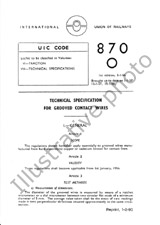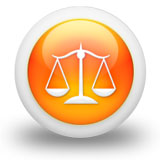We need your consent to use the individual data so that you can see information about your interests, among other things. Click "OK" to give your consent.

UIC 754-3ed.
Omnibus telephone circuits - Regulations for construction and equipment
STANDARD published on 1.12.2004
The information about the standard:
Designation standards: UIC 754-3ed.
Publication date standards: 1.12.2004
SKU: NS-550401
The number of pages: 25
Approximate weight : 75 g (0.17 lbs)
Country: International technical standard
Category: Technical standards UIC
Annotation of standard text UIC 754-3ed. :
Summary:
ry This leaflet concerns the technical aspects of railway telephony, dealing with omnibus circuits as defined in UIC Leaflet 750, Chapter II, B . The principles defined in this leaflet are old in conception, but have in most cases remained valid to this day. The systems have benefited from technological advances and their performance has improved. Fibre optics and new transmission equipment ensure better-quality service on omnibus circuits. Point 2 is dedicated to transmission channels (overhead lines, copper cables and fibre optics), frequency band widths, attenuation and connections. Point 3 is devoted to call systems; those most generally used being centralised call lines (many railways having replaced their decentralised call systems with an automatic telephone network). This point also deals with the various call modes, the nature of call pulses and different call current sources (generators, receivers and repeaters). Point 4 covers the classification of telephones according to the method of use and defines the technical and operating conditions. Points 5 and 6 contain recommendations for the construction of new omnibus circuits and their maintenance. This leaflet does not consider the possible future replacement of omnibus circuits by radio services furnished by GSM-R.
Name:Gesellschafts- (Omnibus-) Fernsprechverbindungen - Regeln für Aufbau und Ausrüstung
Zusammenfassung: Das vorliegende Merkblatt befasst sich mit den technischen Aspekten des Fernsprechwesens im Eisenbahnbereich unter Berücksichtigung der im UIC-Merkblatt Nr. 750, Kapitel II, B , beschriebenen Gesellschaftsfernsprechverbindungen. Die im vorliegenden Merkblatt festgelegten Grundsätze sind in der Konzeption zwar keineswegs neu, jedoch in den meisten Fällen auch heute noch gültig. Technologische Entwicklungen haben eine Aufwertung und eine Leistungssteigerung der Anlagen ermöglicht. Zusammen mit modernen übertragungseinrichtungen sorgen Lichtwellenleiter für eine Qualitätsverbesserung der mit Gesellschaftsfernsprechverbindungen erzielten Leistungen. Der Punkt 2 "übertragungstechnik" ist den übertragungswegen (Freileitungen, Kupferkabel, Lichtwellenleiter), den Frequenzbandbreiten, der Dämpfung und der Ankopplung gewidmet. Im Punkt 3 werden Rufsysteme behandelt. Hierbei stellt der zentrale Ruf das gebräuchlichste System dar, denn viele Bahnen haben ihre Anlagen mit dezentralem Ruf durch automatische Telefonnetze ersetzt. Dieser Punkt befasst sich ebenfalls mit den unterschiedlichen Rufarten, der Rufimpulsgabe und den verschiedenen Rufstromquellen (Generatoren, Rufimpulsempfänger und Rufimpulswiederholer). Der Punkt 4 behandelt die Klassifizierung der Fernsprechstellen je nach Anwendungsfall und betrachtet die technischen und betrieblichen Erfordernisse. Die Punkte 5 und 6 enthalten Empfehlungen zur konstruktiven Gestaltung von neuen Gesellschaftsfernsprechverbindungen und deren Unterhaltung. Im vorliegenden Merkblatt wird die Möglichkeit eines künftigen Ersatzes der Gesellschaftsfernsprechanlagen durch GSM-R-Funkverbindungen nicht berücksichtigt.
We recommend:
Updating of laws
Do you want to be sure about the validity of used regulations?
We offer you a solution so that you could use valid and updated legislative regulations.
Would you like to get more information? Look at this page.



 Cookies
Cookies
